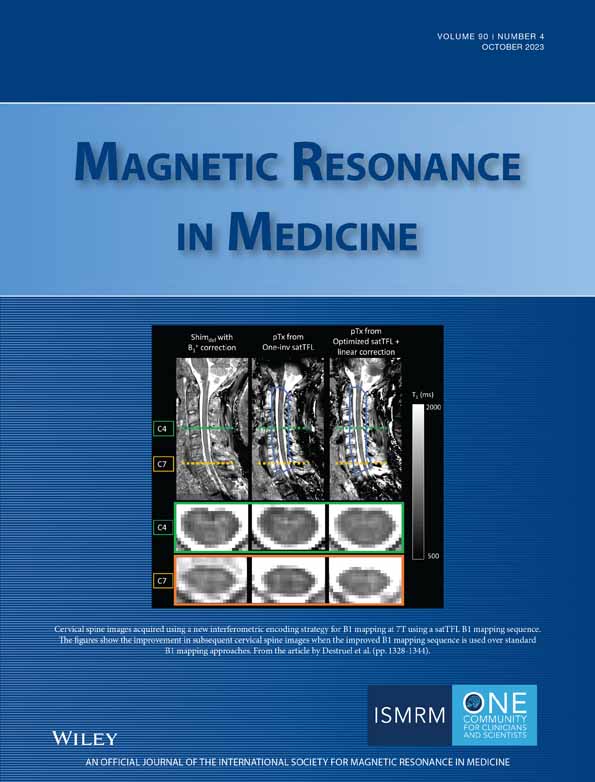Direct synthesis of multi-contrast brain MR images from MR multitasking spatial factors using deep learning
Yibin Xie and Debiao Li contributed equally to this work.
Abstract
Purpose
To develop a deep learning method to synthesize conventional contrast-weighted images in the brain from MR multitasking spatial factors.
Methods
Eighteen subjects were imaged using a whole-brain quantitative T1-T2-T1ρ MR multitasking sequence. Conventional contrast-weighted images consisting of T1 MPRAGE, T1 gradient echo, and T2 fluid-attenuated inversion recovery were acquired as target images. A 2D U-Net–based neural network was trained to synthesize conventional weighted images from MR multitasking spatial factors. Quantitative assessment and image quality rating by two radiologists were performed to evaluate the quality of deep-learning–based synthesis, in comparison with Bloch-equation–based synthesis from MR multitasking quantitative maps.
Results
The deep-learning synthetic images showed comparable contrasts of brain tissues with the reference images from true acquisitions and were substantially better than the Bloch-equation–based synthesis results. Averaging on the three contrasts, the deep learning synthesis achieved normalized root mean square error = 0.184 ± 0.075, peak SNR = 28.14 ± 2.51, and structural-similarity index = 0.918 ± 0.034, which were significantly better than Bloch-equation–based synthesis (p < 0.05). Radiologists' rating results show that compared with true acquisitions, deep learning synthesis had no notable quality degradation and was better than Bloch-equation–based synthesis.
Conclusion
A deep learning technique was developed to synthesize conventional weighted images from MR multitasking spatial factors in the brain, enabling the simultaneous acquisition of multiparametric quantitative maps and clinical contrast-weighted images in a single scan.
Open Research
DATA AVAILABILITY STATEMENT
The code of the DL model and the preprocessed data is accessible on GitHub: https://github.com/QiuSH12/Weighted-syn. The images used in radiologists' ratings are available on XNAT: https://central.xnat.org/app/action/DisplayItemAction/search_element/xnat%3AmrSessionData/search_field/xnat%3AmrSessionData.ID/search_value/CENTRAL02_E06560/popup/false/project/Weight_syn_MT.




